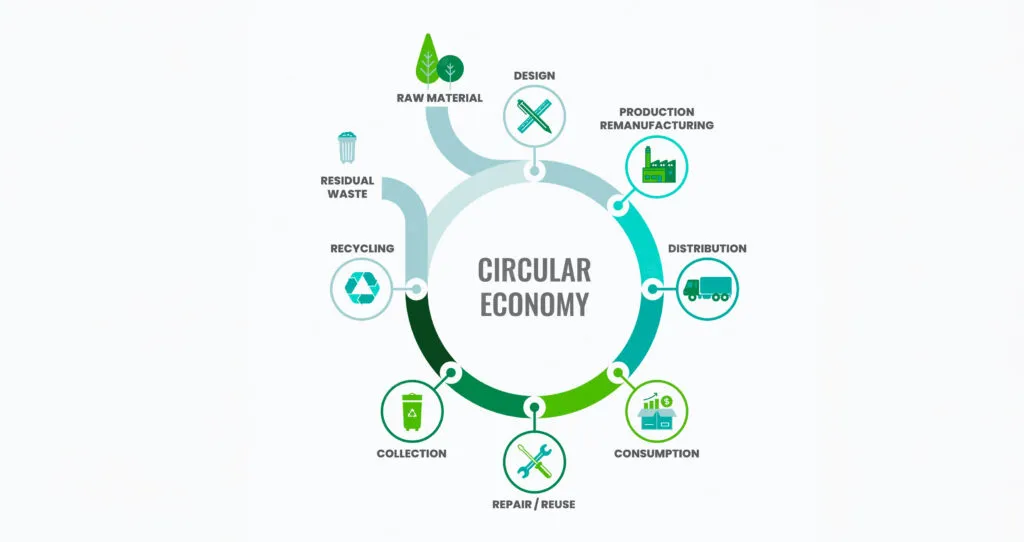

These days, the image of a transparent plastic bag drifting in the ocean serves as a reminder that change is needed.
A consumer culture that prioritises convenience, even for the tiniest purchases, has contributed to the widespread use of various types of single use plastics like traditional plastic bags, HDPE bags, garbage bags, clear plastic bags, LDPE plastic bags and more.
This usage is extensive and continues to grow rapidly.
In this article, we discuss how we can transition from traditional plastics to sustainable alternatives that align with the principles of ESG and the circular economy.
Environment, Social and Governance – ESG
Imagine a world where businesses thrive not just on profits alone but also on how they nurture the environment, care for their community, and govern themselves with integrity.
This is the essence of Environmental, Social and Governance (ESG), the three central factors that have become the guiding principles for modern businesses aiming for lasting and responsible success.
To understand the concept of ESG, let’s look at the example of two gardeners.
1. A gardener who only focuses on quick growth and therefore might use harmful chemicals that provide immediate results but damage the soil over time (short-term gains).
2. On the other hand, the second gardener, who nurtures the soil, uses organic methods, and plans for perennial growth, is investing in a garden that will flourish year after year (long-term impact).
In the business world, ESG is akin to the second gardener’s approach. It helps to gauge the future financial performance of companies by considering how they interact with the environment (like using biodegradable plastic bags instead of single use plastic bags), how they treat their employees and community (such as fair wages and community engagement), and how they govern themselves (through transparent and ethical practises).
With the current climate change and degrading living conditions, there is a great focus on businesses and the actions they are undertaking towards long-term sustainability as a priority over targeting short-term profits.
The Circular Economy and Plastics
In a circular economy, products and materials are kept in use for as long as possible, and waste is minimised. This methodology is in stark contrast with the conventional linear economy, where products are made, used, and then discarded.
When it comes to the plastic sector, being part of the circular economy would include getting on a continuous path of innovation, including the core areas of manufacturing as well as functions like recycling and waste management.
The 12th Malaysian Plan – How it Shapes ESG and the Circular Economy Around Plastics
A Kenanga research study shows how the 12th Malaysia Plan (MP) places special focus on the circular economy as a pivotal strategy. It aims to prolong the lifecycle of products, especially single-use items, by promoting refurbishing, repairing, reusing, and recycling.
As part of the overall framework, a number of initiatives have been introduced, including Extended Producer Responsibility (EPR), which may cost producers but also offer income opportunities.
Efforts to discourage single-use plastics and the introduction of green incentives (GTFS, GITA, and GITE) are also part of the plan.
The plan prioritises the transition of the Malaysian plastic production sector, from being a linear to a circular economy, with the ambition to reduce GHG emissions intensity to GDP by 45% by 2030.
The shift to a circular economy could unlock USD1.3 billion per year in recyclable material value in Malaysia, but currently, only 19% is recycled. This opportunity for recycling as a function comes with a variety of possible benefits for plastic recycling companies within the country.
In terms of valuations, a 5-9% ESG discount has been applied to plastic packagers to reflect Kenanga ESG scoring and Collected For Recycling (CFR) rates, with SCGM highlighted as the preferred pick.
The 12th MP is a statement of intent from Malaysia to progress towards sustainability and plastic waste management with great effort.
Final Takeaways
The decisions made today by industries and individuals will have an incredibly heavy influence
on the quality of life for future generations and their living conditions.
The integration of ESG principles and the circular economy in our approach to plastic consumption, including the use of OXO biodegradable bags, is not just a corporate responsibility but a collective one.
The path to change is before us, filled with opportunity and promise. The future is ours to shape, and the time to act with purpose and passion is now.
